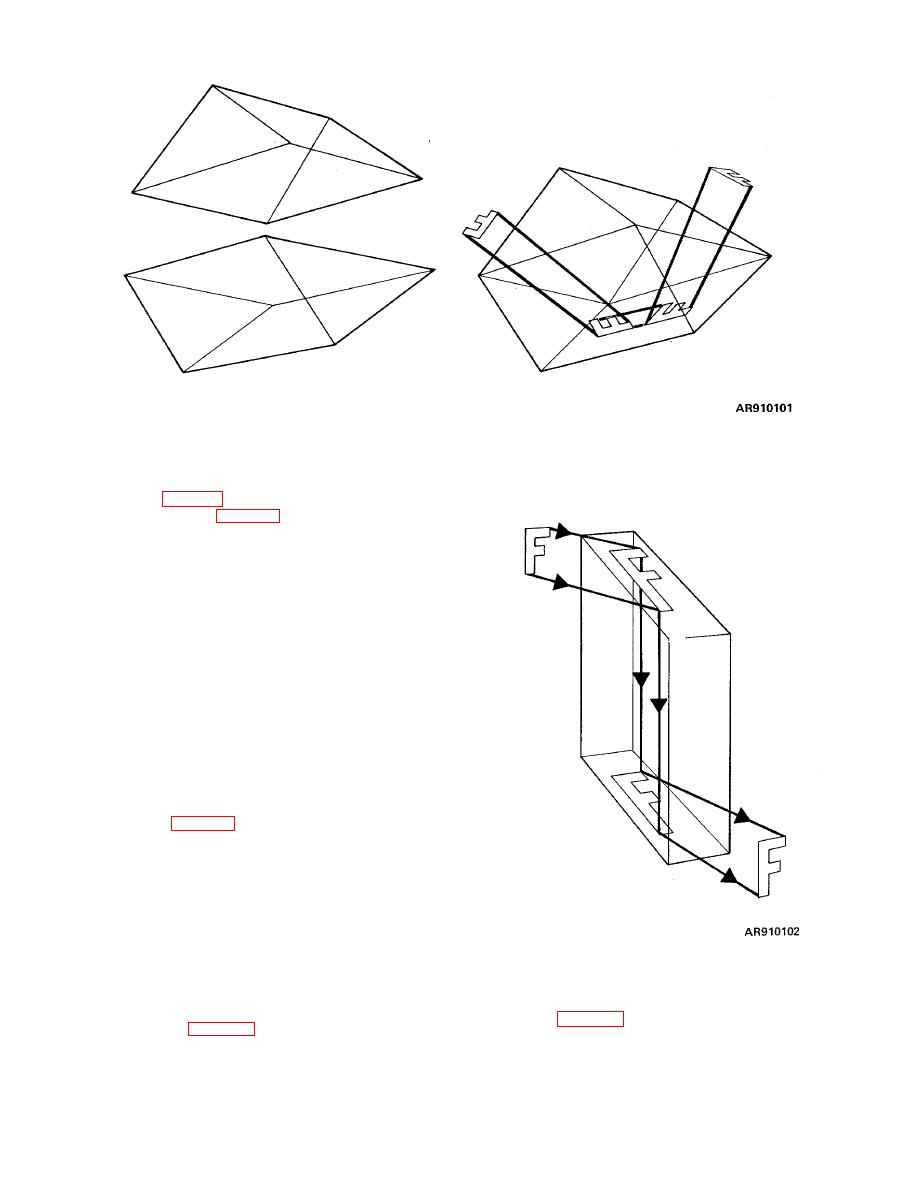 |
|||
|
|
|||
|
Page Title:
Figure 4-11. Amici or roof-angle prism. |
|
||
| ||||||||||
|
|
 TM 9-258
Figure 4-11. Amici or roof-angle prism.
(2) When employed as the erecting prism of an
elbow telescope (fig 8-11), one of its uses, the light ray
enters One short face (fig 4-11) where it strikes the
reflecting surface of one side of the roof. It is reflected to
the other side of the roof where it is reflected outwardly
at right angles to the direction in which it entered the
prism.
Usually, the parts of the prism not used by light rays are
removed affecting the appearance of the prism but not
its fundamental shape or function.
(3) The Amici prism is compact and it transmits
a great amount of light but is one of the most difficult of
all prisms to manufacture because the angle between
the two inclined faces of the roof cannot differ from 90
by more than 2 seconds if the prism is to function
satisfactorily.
e. Rhomboidal Prism. The Rhomboidal or
Rhomboid prism (fig 4-12) may be considered as made
up of two right-angle reflecting prisms built in one piece,
or as a block of glass with the upper and lower or two
other opposite faces cut at an angle of 450 and parallel
to each other. This prism has two parallel reflecting
surfaces providing two reflections in the same plane and
transmits the image unchanged. It does not invert or
revert the image nor change the direction of the light rays
but displaces the light rays parallel to themselves.
Figure 4-12. Rhomboidal prism.
This is due to double reflection without reversal of the
f. Rotating Dove Prism. The rotating Dove
direction of light. This result is obtained from mirrors in
prism (A, fig 4-13) resembles the rhomboidal prism
certain periscopes (fig 8-19). Rhomboidal prisms are
except that the angles of its ends are opposite to one
employed to shift the lines of sight to secure
another
and
this
prism
serves
an
interpupillary distance adjustment. It is used in the range
finder.
4-13
|
|
Privacy Statement - Press Release - Copyright Information. - Contact Us |